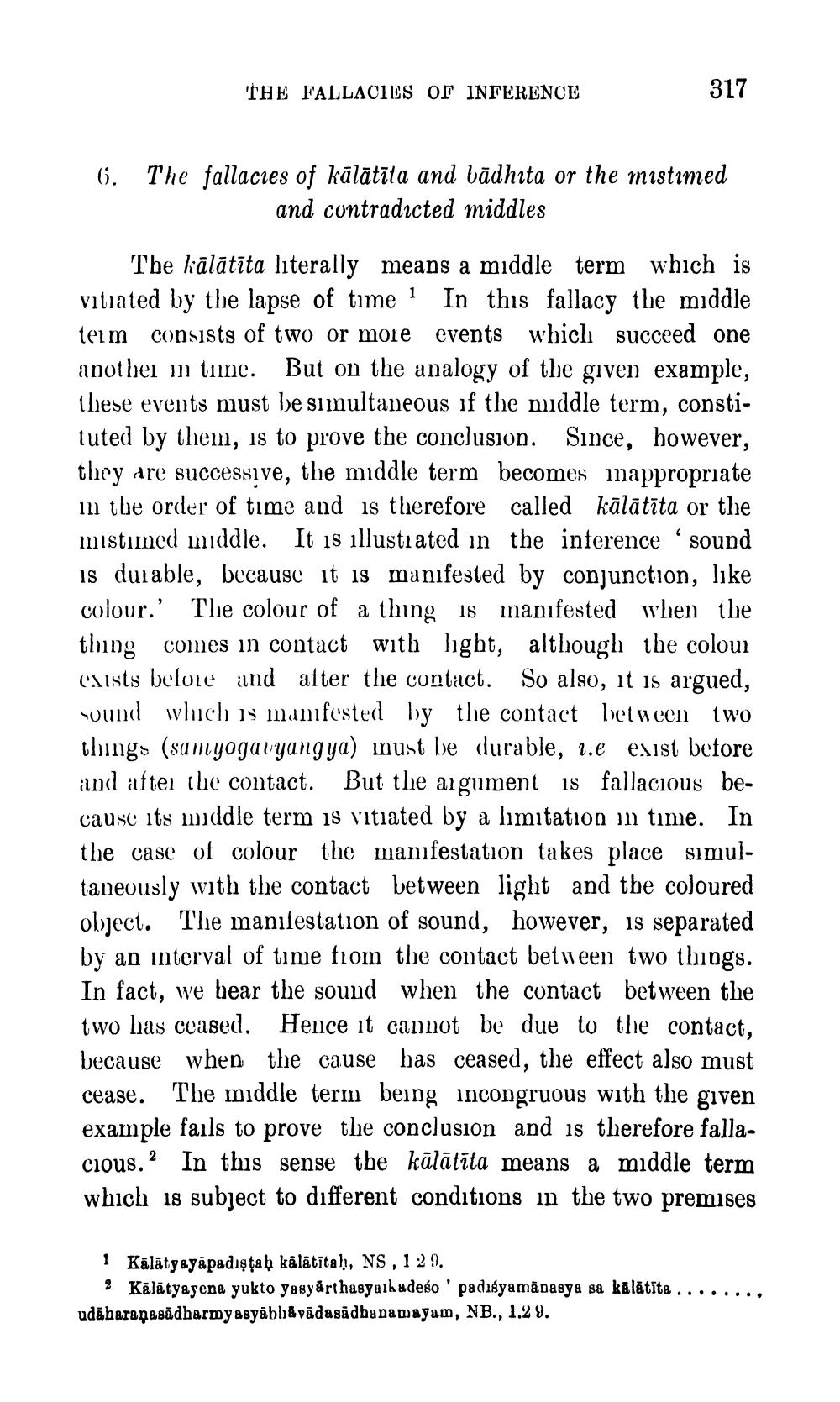________________
THE FALLACIES OF INFERENCE
317
6.
The fallacies of kālātīta and bādhita or the mistimed
and contradicted middles
The kālātīta literally means a middle term which is vitiated by the lapse of time 1 In this fallacy the middle teim consists of two or more events which succeed one another in time. But on the analogy of the given example, these events must be simultaneous if the middle term, constituted by them, is to prove the conclusion. Since, however, they are successive, the middle term becomes mappropriate m the order of time and is therefore called kālātīta or the mistimed middle. It is illustrated in the interence 'sound is durable, because it is manifested by conjunction, like colour.' The colour of a thing is inanifested when the thing comes in contact with light, although the colour Custs before and after the contact. So also, it is argued, sound wluch is manifested by the contact between two things (samyogavyangya) inust be durable, i.e exist before and after the contact. But the argument is fallacious because its middle term is vitiated by a limitation in time. In the case of colour the manifestation takes place simultaneously with the contact between light and the coloured object. The manilestation of sound, however, is separated by an interval of time from the contact between two things. In fact, we hear the sound when the contact between the two has ceased. Hence it cannot be due to the contact, because when the cause has ceased, the effect also must cease. The middle term being incongruous with the given example fails to prove the conclusion and is therefore fallacious. In this sense the kālātīta means a middle term which is subject to different conditions in the two premises
1 Kālātyayapadıştah kālātītah, NS , 1 29.
% Kālātyagena yukto yasyårt hasyarhadeso' padisyamāpasya sa kālātīta ..... udābaranasādharmyasyābb&vādasādhanamayam, NB., 1.2 9.




